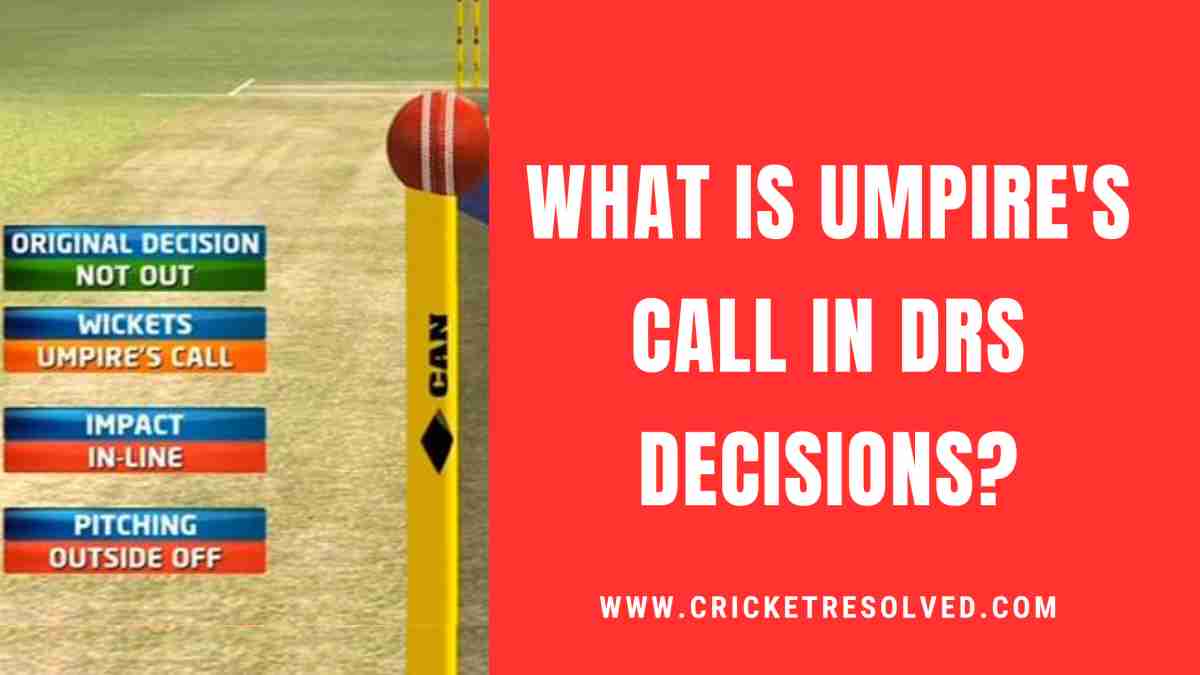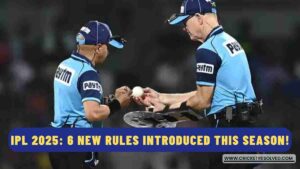
The umpire’s call in cricket is a method of making more precise choices while maintaining the human element. Cricket, like many other sports, can be complicated, and when combined with technology, it can become even more so for casual fans. Even regular fans are perplexed by the umpire’s decision, which generally elicits polarizing emotions.
What is the Umpire’s Call in DRS?
The umpire’s call became a prominent word in cricketing discourse when DRS was implemented in 2008.
A player or a team can choose to have an LBW or caught dismissal reviewed. The on-field umpire then makes a TV-shaped box motion, signalling the review to be sent upstairs.
For LBW decisions, the umpire’s call is considered. There are three zones in ball tracking that are vital in determining whether the batter is dismissed leg-before-wicket or not. Three reds mean you are out.
Pitching Zone – This is the first stage of ball tracking once the delivery is judged to be lawful. Pitching is where the ball lands on the pitch, as the name implies. It is called a ‘red’ whether it is outside of the stump or in line with the stumps. The third umpire does not need to go any farther and can declare it not out if the pitching is outside the leg stump.
Impact Zone – The impact zone is where the ball first makes contact with the pads. If the ball hits in line with the stumps, it is red. If it hits outside the off stump or outside the leg stump, it is ruled not out.
Wicket Zone – The final stage of ball tracking is where the ball is anticipated to strike the stumps. The wicket zone is defined as the space between the stumps’ bases, the outer edges of the off stump and leg stump, and the top of the bails.
The umpire’s call is no longer relevant in the pitching zone since ball tracking technology can detect where the ball has been pitched with pinpoint accuracy. Either green or red will be displayed on the screen.
In the impact zone, if the technology cannot determine whether the ball made first contact with the pads in line or not, the on-field umpire’s call stands.
The DRS is most difficult to use in the wicket zone. The ball tracking system anticipates the course of the ball after it has made contact with the stumps. What we see on the screen is merely one of several possible predicted trajectories. As a result, the umpire’s call rule makes sense.
Do teams lose their review because of an “umpire’s call” decision?
No, teams do not lose their review because of an “umpire’s call” decision.
How Does the Umpire’s Call Affect the Final Decision?
The importance of the umpire’s call in determining the final outcome of a decision cannot be overstated.
For example, if the technology indicates that a batsman is out LBW (leg before wicket), but the point of impact is assessed to be within the range of the umpire’s call, the on-field umpire’s initial decision holds, and the batter is not out. However, if the technology suggests that the batter is not out but the umpire’s call range indicates that the ball would have hit the stumps, the batsman is considered out.
Conclusion
The use of the umpire’s call guarantees that decisions are made with certainty and consistency. It respects technology’s contribution while retaining the authority of the on-field umpire. While it can occasionally result in close and contentious decisions, it is used to establish a balance between the human factor and the usage of technology in cricket officiating.







3 thoughts on “What is Umpire’s Call in DRS Decisions?”